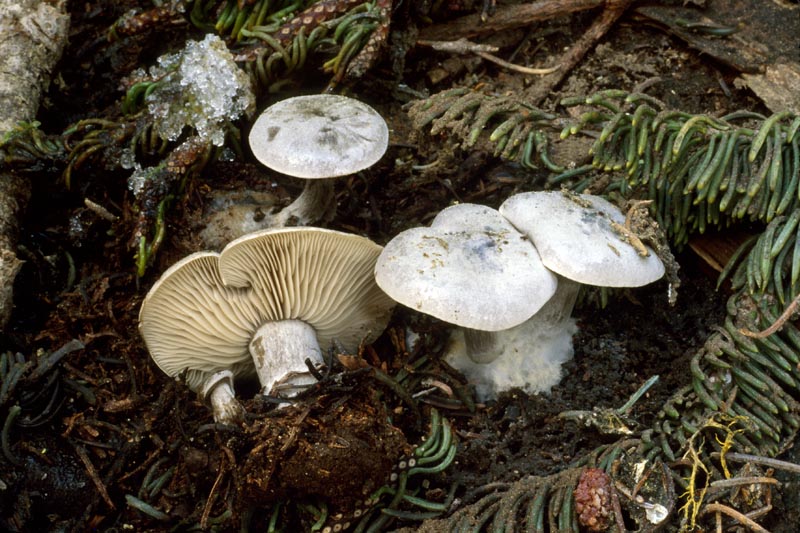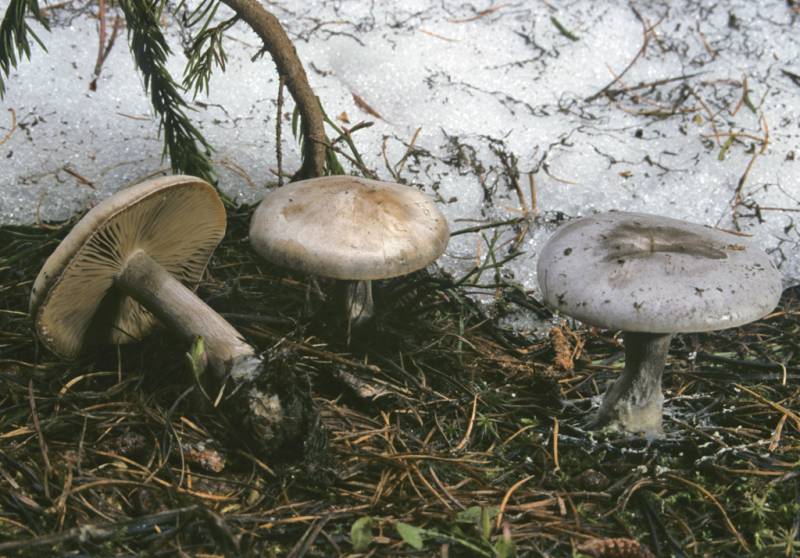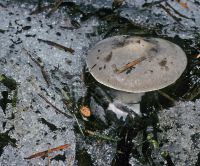Distribution: Western snowbank mushroom
Habitat: Snowbanks or in cavities melted out of snowbanks
Spores: late May to early July
Conservation Status: Not of concern
Until recently, this common western snowbank mushroom had been called Lyophyllum montanum A. H. Smith. When fresh it has a pale gray to silvery gray cap but older specimens develop gray-brown or yellow-brown colors, changing so much as to appear as a different mushroom. The gills are close and grayish, and darken somewhat with age. The stipe is equal, colored like the cap, somewhat fibrillose below and with a dense covering of white strands at the base. C. glacialis often can be found with C. albirhiza and Melanoleuca angelesiana A. H. Smith and is easily confused with the latter when mature. However, melanoleucas have spores with amyloid ornamentation while those of C. glacialis are smooth and non-amyloid.
Sources: Trudell, Steve and Joe Ammirati. Mushrooms of the Pacific Northwest. Portland, Timber Press, Inc. 2009. Cripps, Cathy L., Vera S. Evenson, and Michael Kuo. Rocky Mountain Mushrooms by Habitat. Chicago, University of Illinois Press, 2016.
PNW Herbaria: Specimen records of Clitocybe glacialis in the Consortium of Pacific Northwest Herbaria database
CalPhotos: Clitocybe glacialis photos






